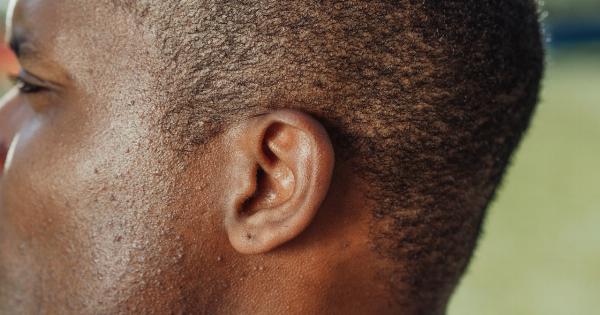As we age, our bodies go through various changes, and our ears are no exception. The aging process can have a significant impact on our hearing ability, leading to various hearing problems and conditions.
Understanding how our ears age can help us take better care of our auditory health and seek appropriate treatments when necessary. In this article, we will explore the different aspects of ear aging and its implications for hearing ability.
The Anatomy of the Aging Ear
Our ears consist of three main parts: the outer ear, the middle ear, and the inner ear. Each part plays a crucial role in the process of hearing, and any disruption in their functioning can affect our ability to hear properly.
Outer Ear Changes
As we age, the shape and structure of our outer ears undergo some changes. The age-related changes in the outer ear are primarily cosmetic and generally do not impact hearing ability directly.
However, these changes can affect the perception of sound, particularly high-frequency sounds.
Middle Ear Changes
The middle ear includes the eardrum and three tiny bones called ossicles. These ossicles transmit sound from the eardrum to the inner ear. With age, the ossicles may become less flexible, making it harder to transmit sound effectively.
This can result in reduced hearing sensitivity, especially for higher frequencies. Age-related changes in the middle ear can also contribute to conditions such as otosclerosis, where the bones of the middle ear become abnormally thickened and stiffened.
Inner Ear Changes
The inner ear contains delicate hair cells that convert sound vibrations into electrical signals that can be interpreted by the brain.
Over time, these hair cells can become damaged or die, leading to sensorineural hearing loss, the most common type of age-related hearing loss, also known as presbycusis. Sensorineural hearing loss often affects the ability to hear high-frequency sounds and can progressively worsen over time.
Age-Related Hearing Loss
Age-related hearing loss, or presbycusis, is a prevalent condition among older adults.
It is estimated that approximately one in three people between the ages of 65 and 74 has hearing loss, and nearly half of individuals over 75 experience hearing difficulties.
Presbycusis typically starts with a decline in the ability to hear high-frequency sounds, such as birds chirping or the ringing of a telephone. Speech comprehension and understanding may also be affected, particularly in noisy environments.
Individuals with age-related hearing loss may struggle to follow conversations, experience difficulty hearing certain consonant sounds, and often require increased volume when watching television or using phones.
Factors Contributing to Age-Related Hearing Loss
While aging is the primary factor behind age-related hearing loss, other factors can contribute to its development and progression. These include:.
1. Genetics
Genetic factors can influence an individual’s susceptibility to age-related hearing loss. Some people have a genetic predisposition to early-onset hearing loss, while others may have genes that provide protection against it.
2. Noise Exposure
Repetitive exposure to loud noises over time can accelerate age-related hearing loss. Individuals who work in occupations with high noise levels or regularly attend loud concerts or events without proper hearing protection are at a higher risk.
3. Medical Conditions
Certain medical conditions, such as high blood pressure, diabetes, cardiovascular disease, and ototoxicity (medication-induced hearing loss), can contribute to age-related hearing loss or exacerbate its effects.
4. Smoking
Smoking can negatively impact blood circulation, reducing oxygen and nutrient supply to the ears and increasing the risk of age-related hearing loss.
Treating Age-Related Hearing Loss
While age-related hearing loss is generally irreversible, there are several treatment options and interventions available to manage its effects and improve communication abilities:.
Hearing Aids
Hearing aids are the most common and effective solution for individuals with age-related hearing loss. They amplify sounds and enhance speech understanding, making it easier for individuals to communicate and actively participate in conversations.
Cochlear Implants
Cochlear implants are electronic devices surgically implanted in the inner ear to bypass damaged hair cells and stimulate the auditory nerve directly. They are typically recommended for individuals with severe to profound hearing loss.
Hearing Assistive Technology
Hearing assistive technology, such as captioned telephones, personal amplifiers, and FM systems, can provide additional support in challenging listening situations and improve speech comprehension.
Communication Strategies
Learning effective communication strategies, such as lip-reading, using visual cues, and advocating for hearing-friendly environments, can significantly enhance communication and reduce the impact of age-related hearing loss.
Hearing Loss Prevention
While age-related hearing loss is inevitable for many, there are steps individuals can take to minimize its impact and preserve their hearing health:.
1. Protect Your Ears
Wearing ear protection, such as earplugs or earmuffs, in noisy environments and limiting exposure to excessively loud sounds can help prevent further damage to the ears.
2. Get Regular Hearing Check-ups
Regular hearing check-ups, especially for individuals over 50, can help identify any changes in hearing ability and enable prompt intervention if necessary. Early detection is crucial in managing age-related hearing loss effectively.
3. Maintain a Healthy Lifestyle
Eating a balanced diet, engaging in regular physical exercise, managing stress levels, and avoiding smoking can contribute to overall health and potentially reduce the risk of age-related hearing loss.
4. Stay Mentally and Socially Active
Engaging in mentally stimulating activities and maintaining social connections can help preserve cognitive function and reduce the impact of age-related hearing loss on daily life.
Conclusion
As we age, our ears undergo various changes that can affect our hearing ability. Understanding these changes and their implications can help us proactively manage age-related hearing loss and seek appropriate interventions when needed.
Regular hearing check-ups and adopting preventive measures can significantly contribute to maintaining optimal hearing health throughout our lives.




























